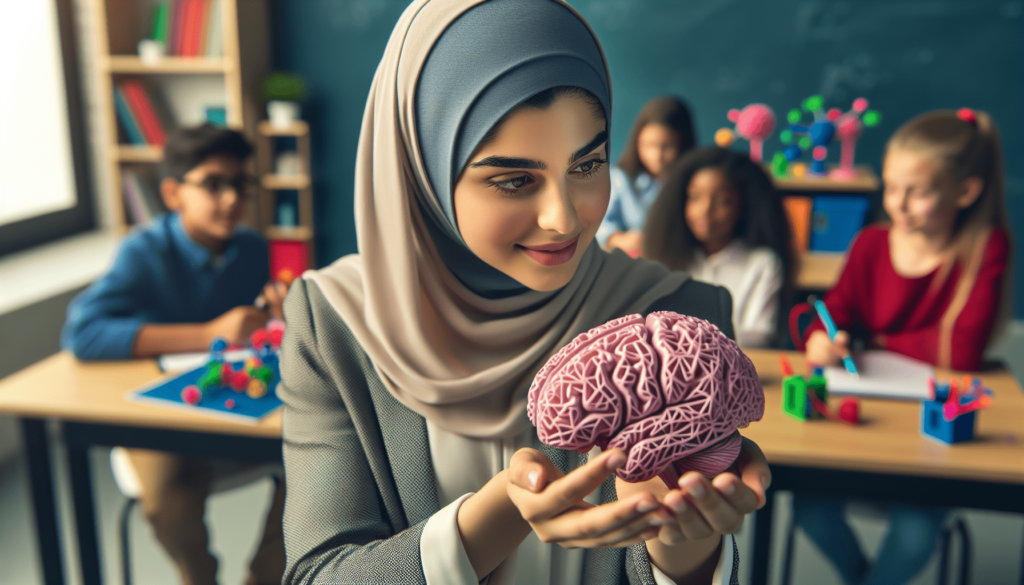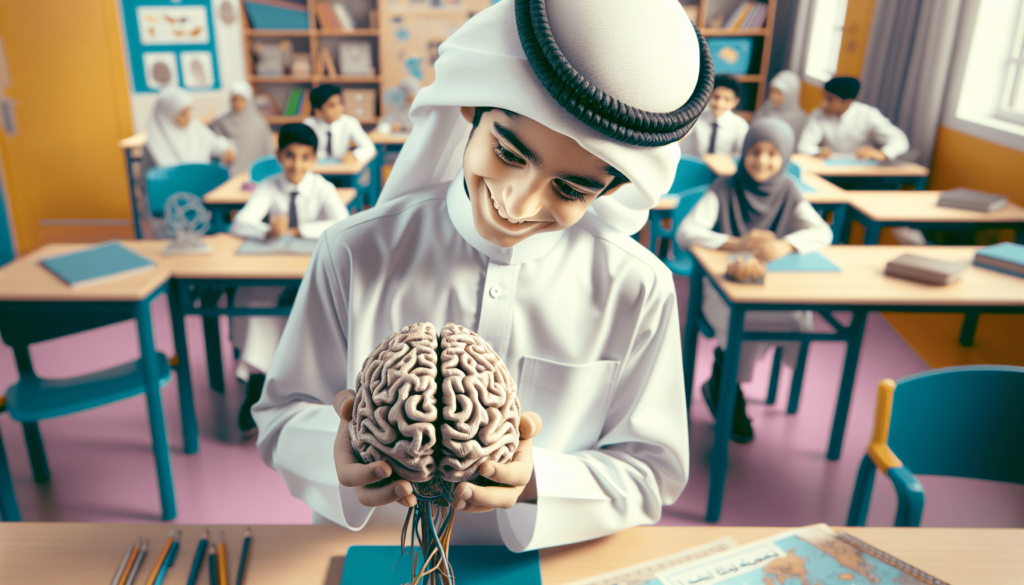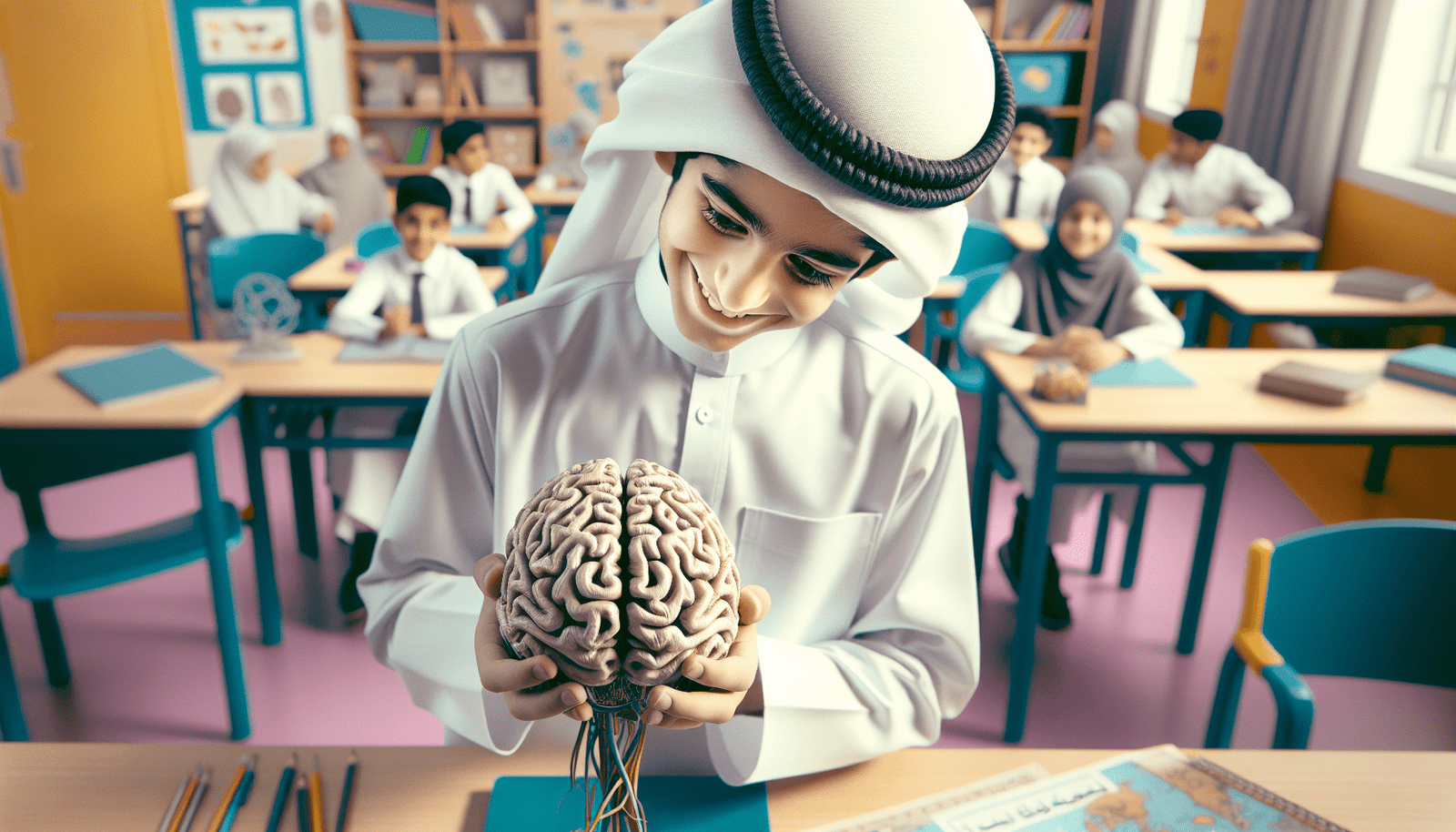Imagine a world where students can bring their ideas to life with a simple press of a button. This is the exciting reality of 3D printing in education. With its numerous benefits and unique set of challenges, 3D printing has become an invaluable tool in the classroom. From fostering creativity and problem-solving skills to bridging the gap between abstract concepts and tangible objects, this innovative technology is revolutionizing the way students learn. However, as with any new advancement, there are also hurdles to overcome. In this article, we will explore the incredible benefits of incorporating 3D printing into education, as well as the challenges that educators and students may face along the way.

Enhanced Learning Experience
Hands-on Learning
One of the biggest advantages of incorporating 3D printing technology in education is the opportunity for hands-on learning. With traditional classroom teaching methods, students often rely on textbooks and lectures to understand complex concepts. However, 3D printing provides a tangible experience where students can actively participate in the learning process. They can design and create physical objects, allowing them to gain a deeper understanding of abstract ideas.
Visualizing Complex Concepts
Visualizing complex concepts can be a struggle for many students, particularly in subjects like science, technology, engineering, and mathematics (STEM). 3D printing overcomes this challenge by enabling students to materialize abstract ideas into tangible objects. By manipulating digital models and transforming them into physical prototypes, students can better understand the intricacies of complex concepts. This visual representation enhances comprehension and retention, making learning more engaging and effective.
Customization and Personalization
Another significant benefit of 3D printing in education is the ability to customize and personalize learning experiences. Each student has unique learning styles and preferences, and with 3D printing, educators can tailor instructional materials to suit individual needs. By providing students the opportunity to create their own designs and prototypes, they can take ownership of their learning and explore topics that align with their interests. This level of customization promotes a sense of empowerment and fosters a love for learning.
Promoting Creativity and Problem Solving
Design Thinking
Design thinking is a problem-solving approach that encourages creativity and innovation. 3D printing empowers students to apply design thinking principles by allowing them to brainstorm ideas, prototype their designs, and iterate on their solutions. Through the iterative process of designing and printing, students can test their creations, identify flaws, and make improvements. This iterative cycle cultivates critical thinking skills, resourcefulness, and resilience, preparing students to solve real-world challenges.
Prototyping and Iteration
Prototyping and iteration are fundamental aspects of the design process. With 3D printing, students can rapidly create prototypes, test them, and iterate on their designs to optimize functionality and address design flaws. This iterative approach fosters a culture of innovation and problem-solving, as students learn to embrace failure as an opportunity for improvement. By utilizing 3D printing technology, students gain practical experience in the iterative design process, equipping them with invaluable skills for future endeavors.
Encouraging Innovation
By incorporating 3D printing technology in education, schools foster an environment that encourages innovation. 3D printing allows students to transform their ideas into tangible objects, giving them a platform to explore their creativity and turn imagination into reality. The ability to physically create and test prototypes fosters innovation by pushing students to think outside the box, develop new ideas, and challenge established norms. This fosters a culture of innovation and empowers students to become future entrepreneurs and creators.
Improved Collaboration and Communication
Teamwork and Project-based Learning
Collaboration and communication skills are essential for success in today’s interconnected world. 3D printing facilitates project-based learning, where students work collaboratively on multidisciplinary projects. This collaborative approach allows students to leverage each other’s strengths, share ideas, and learn from diverse perspectives. Working together on 3D printing projects promotes teamwork, communication, and problem-solving skills, all of which are highly valuable in professional settings.
Enhancing Communication Skills
Effective communication is crucial in any field. With 3D printing, students have the opportunity to present and communicate their ideas visually. They can showcase their designs and prototypes, explaining the rationale behind their choices and demonstrating their understanding of the subject matter. This enhances their communication skills, as they learn to articulate their thoughts and ideas in a concise and compelling manner. By incorporating 3D printing into the learning process, educators can help students develop effective communication skills that are applicable across various domains.
Virtual Collaboration
In addition to promoting collaboration within the classroom, 3D printing also facilitates virtual collaboration. Students can share their designs and prototypes online, allowing for collaboration and feedback from peers in different geographic locations or even professionals in relevant industries. This virtual collaboration broadens students’ perspectives, exposes them to different cultural and professional practices, and nurtures a global mindset. Through virtual collaboration, students learn to work with individuals from diverse backgrounds, preparing them for the globalized workforce of the future.

Cost Efficiency and Resource Optimization
Reducing Material Waste
Traditionally, when students needed to create physical models or prototypes, they would often use materials that generate waste and incur costs. 3D printing, on the other hand, provides a more sustainable solution by reducing material waste. By printing objects layer by layer, 3D printers only use the necessary amount of material, minimizing waste and avoiding excessive expenses. This not only benefits the environment but also allows educators to allocate resources more judiciously, maximizing the educational value derived from available materials.
Access to Expensive Equipment
Certain specialized equipment required for educational purposes may be costly and difficult to obtain. However, 3D printing bridges this gap by providing access to expensive equipment at a fraction of the cost. With 3D printers, students can experiment with advanced technologies, such as rapid prototyping and manufacturing processes, without the need for a fully equipped workshop. This affordability and accessibility democratizes education, ensuring that students from all backgrounds have the opportunity to explore and master cutting-edge technologies.
Lowered Costs for Teaching Materials
Textbooks and teaching materials can be expensive, especially when updated versions are frequently released. 3D printing offers a cost-effective alternative by allowing educators to create their own teaching materials, such as models, visual aids, and interactive learning tools. This lowers the costs associated with purchasing pre-made teaching materials while empowering educators to customize and adapt resources to better suit the learning needs of their students. By utilizing 3D printing, educational institutions can reduce expenses and allocate funds to other areas that enhance the overall learning experience.
Career and Technical Skills Development
Preparing for the Future Workforce
The ever-evolving job market demands individuals with a diverse skill set, including technical and STEM-related competencies. 3D printing equips students with the practical skills and knowledge required to succeed in the future workforce. By engaging in hands-on 3D printing projects, students develop critical thinking, problem-solving, and digital literacy skills that are highly sought after by employers. Additionally, exposure to 3D printing industries and the latest technological advancements prepares students for careers in fields such as engineering, product design, and manufacturing.
Developing Technical Skills
3D printing provides a platform for students to hone their technical skills. From designing 3D models using computer-aided design (CAD) software to operating and maintaining 3D printers, students acquire valuable technical skills that are transferable to various industries. The ability to understand and navigate 3D printing technology empowers students to leverage the capabilities of emerging technologies and stay ahead in an increasingly technological world. Developing technical skills through 3D printing prepares students for the demands of a digitized and automated workforce.
Exploring STEM Fields
STEM education plays a pivotal role in nurturing the next generation of innovators and problem solvers. 3D printing complements STEM subjects by providing a practical avenue for students to apply scientific principles and concepts. By working on 3D printing projects, students gain a deeper understanding of STEM fields, such as physics, engineering, biology, and mathematics. This hands-on approach fosters interest and curiosity, encouraging students to explore STEM careers and pursue higher education in related fields. 3D printing serves as a catalyst for students’ engagement in STEM disciplines.
Inclusive Education
Enhancing Accessibility
Inclusive education aims to accommodate diverse learning needs and ensure equal opportunities for all students. 3D printing technology enhances accessibility by providing adaptive tools and resources that cater to different learning styles and abilities. With 3D printers, educators can create tactile models for visually impaired students, enabling them to comprehend complex concepts through touch. Additionally, 3D printing can produce assistive devices, allowing students with physical impairments to actively participate in hands-on activities. By incorporating 3D printing in the classroom, educators embrace inclusivity and empower students with diverse needs.
Adapting for Special Educational Needs
Students with special educational needs often require adaptations and individualized approaches to learning. 3D printing allows for customization and adaptability, making it a valuable tool for educators working with individuals with special needs. Whether it is developing sensory aids, augmentative and alternative communication devices, or personalized learning materials, 3D printing enables educators to meet the unique needs of every student. This customization promotes inclusion, tailoring the learning experience to optimize skill development and cater to individual strengths.
Assistive Technologies
Assistive technologies are crucial for individuals with disabilities, enhancing their independence and enabling them to participate fully in society. 3D printing facilitates the production of assistive technologies by providing a cost-effective and efficient method of manufacturing. With 3D printers, educators and students can create custom assistive devices, such as prosthetic limbs, orthotics, and adaptive tools. This empowers individuals with disabilities, as they can now access personalized assistive technologies that are specifically designed to meet their unique needs. 3D printing revolutionizes inclusion in education by making assistive technologies more accessible and affordable.
Curriculum Integration
Interdisciplinary Learning Opportunities
Interdisciplinary learning encourages students to make connections across different subjects, providing a holistic education experience. 3D printing offers interdisciplinary learning opportunities by combining elements of science, technology, engineering, arts, and mathematics. Students can develop projects that integrate multiple disciplines, fostering a comprehensive understanding of real-world problems and their potential solutions. By incorporating 3D printing into interdisciplinary projects, educators facilitate learners’ ability to think critically, collaborate, and apply knowledge from different subjects, preparing them for complex challenges in the future.
Integration with Core Subjects
3D printing can seamlessly integrate with core subjects, enhancing the learning experience across various disciplines. By merging theoretical concepts with practical implementations, educators can reinforce subject matter comprehension and engagement. For example, in history classes, students can recreate historical artifacts using 3D printing technology, bridging the gap between the past and the present. In biology, students can print 3D models of cells or organs to visualize their structures. The integration of 3D printing with core subjects deepens students’ understanding while making learning more interactive and immersive.
Embedding 3D Printing in Lesson Plans
To fully leverage the educational potential of 3D printing, it is essential to embed it in lesson plans and curriculum design. Educators should strategically incorporate 3D printing projects and activities that align with learning outcomes and cater to the developmental needs of students. By planning lessons that utilize 3D printing, educators ensure that students gain the necessary knowledge, skills, and competencies required for academic success and broader personal growth. Embedding 3D printing in lesson plans helps establish a cohesive and comprehensive learning experience that maximizes the benefits of this transformative technology.
Introducing Real-World Applications
Applying Knowledge in Practical Situations
Understanding concepts and theories is essential, but applying that knowledge in practical situations is equally important. 3D printing enables students to bridge the gap between theory and application by allowing them to create real-world objects and solutions. By designing and printing functional prototypes, students gain hands-on experience that simulates the challenges they may encounter in their future careers. This practical application of knowledge fosters critical thinking, problem-solving, and innovation while instilling confidence in students’ ability to tackle real-world challenges.
Creating Solutions for Local Challenges
3D printing also empowers students to identify and address local challenges within their communities. By engaging in service-learning projects, students can utilize their 3D printing skills to create innovative solutions for real problems faced by their communities. From designing assistive devices for individuals with disabilities to creating sustainable products that reduce environmental impact, students can make a tangible difference through 3D printing. This hands-on experience fosters empathy, empathy, and social responsibility while nurturing a sense of civic engagement among students.
Exposure to 3D Printing Industries
By incorporating 3D printing into education, students are exposed to the 3D printing industry and the vast array of career opportunities it presents. Through field trips, guest speakers, or virtual interactions with professionals in the industry, students gain insights into the practical applications of 3D printing technology. This exposure broadens their horizons, ignites their passion for innovation, and inspires future career paths. By nurturing an early interest in the 3D printing industry, educators help students navigate the world of work and prepare them for the jobs of tomorrow.
Ethical Considerations
Intellectual Property Rights
As 3D printing becomes more widely accessible, ethical considerations surrounding intellectual property rights become paramount. With the ability to replicate existing designs, there is a need to educate students about copyright infringement and the importance of respecting intellectual property. Educators must emphasize the ethical use of 3D printing technology, encouraging students to design and create original works while respecting the rights of others. By promoting ethical practices, educators cultivate a mindset of integrity and responsible creation in students.
Safety and Health Risks
While 3D printing brings immense educational opportunities, it is essential to address safety and health risks associated with the technology. Educators must prioritize safety protocols and ensure that students are aware of the potential hazards, such as exposure to fumes or high temperatures. Additionally, students should be educated on proper equipment handling, maintenance, and safe operation of 3D printers. By creating a culture of safety awareness, educators can minimize risks and foster a secure learning environment that prioritizes the well-being of students.
Responsible Consumption of Resources
The environmental impact of 3D printing, particularly in terms of energy consumption and material waste, should be a topic of discussion in the classroom. Educators can educate students about sustainable practices in 3D printing, such as using recycled or biodegradable materials and optimizing 3D printer settings to reduce energy consumption. By instilling a sense of responsibility and ecological awareness among students, educators promote sustainable practices that minimize the negative impact of 3D printing on the environment.
Technical Challenges and Limitations
Complexity of Hardware and Software
3D printing involves the use of complex hardware and software, which can present a steep learning curve for students and educators alike. Educators must invest time and effort in familiarizing themselves with the technology to effectively guide students. Additionally, students need to acquire proficiency in operating 3D printers, understanding CAD software, and troubleshooting potential technical issues. Integrating 3D printing into the curriculum requires ongoing training and professional development opportunities for educators to navigate the technical complexities associated with this innovative technology.
Maintenance and Technical Support
Like any technology, 3D printers require regular maintenance to ensure optimum performance. Educators must be equipped with the knowledge and skills to maintain and troubleshoot 3D printers to minimize downtime and disruptions in the learning process. Furthermore, schools should establish partnerships with manufacturers or technical support providers to address technical issues effectively. Access to reliable technical support is crucial to ensure 3D printers function optimally, allowing students to fully engage with the technology without unnecessary technical hurdles.
Limited Printer Access
While the benefits of 3D printing in education are vast, limited access to 3D printers can be a significant challenge. Many educational institutions may not have the resources or infrastructure to provide each student with individual access to 3D printers. This limitation can restrict the potential of 3D printing, as students may not have sufficient time or opportunities to experiment and explore the technology fully. Educators need to find creative solutions, such as scheduling dedicated 3D printing sessions or partnering with external organizations, to ensure equitable access to 3D printers for all students.
In conclusion, 3D printing has the potential to revolutionize education by enhancing the learning experience, promoting creativity and problem-solving, improving collaboration and communication, optimizing resources, developing career and technical skills, fostering inclusivity, and introducing real-world applications. However, it is crucial to address ethical considerations, overcome technical challenges, and provide equitable access to 3D printing technology. By embracing this transformative technology and integrating it into educational practices, educators can empower students to become innovative thinkers, skilled problem solvers, and responsible global citizens.

